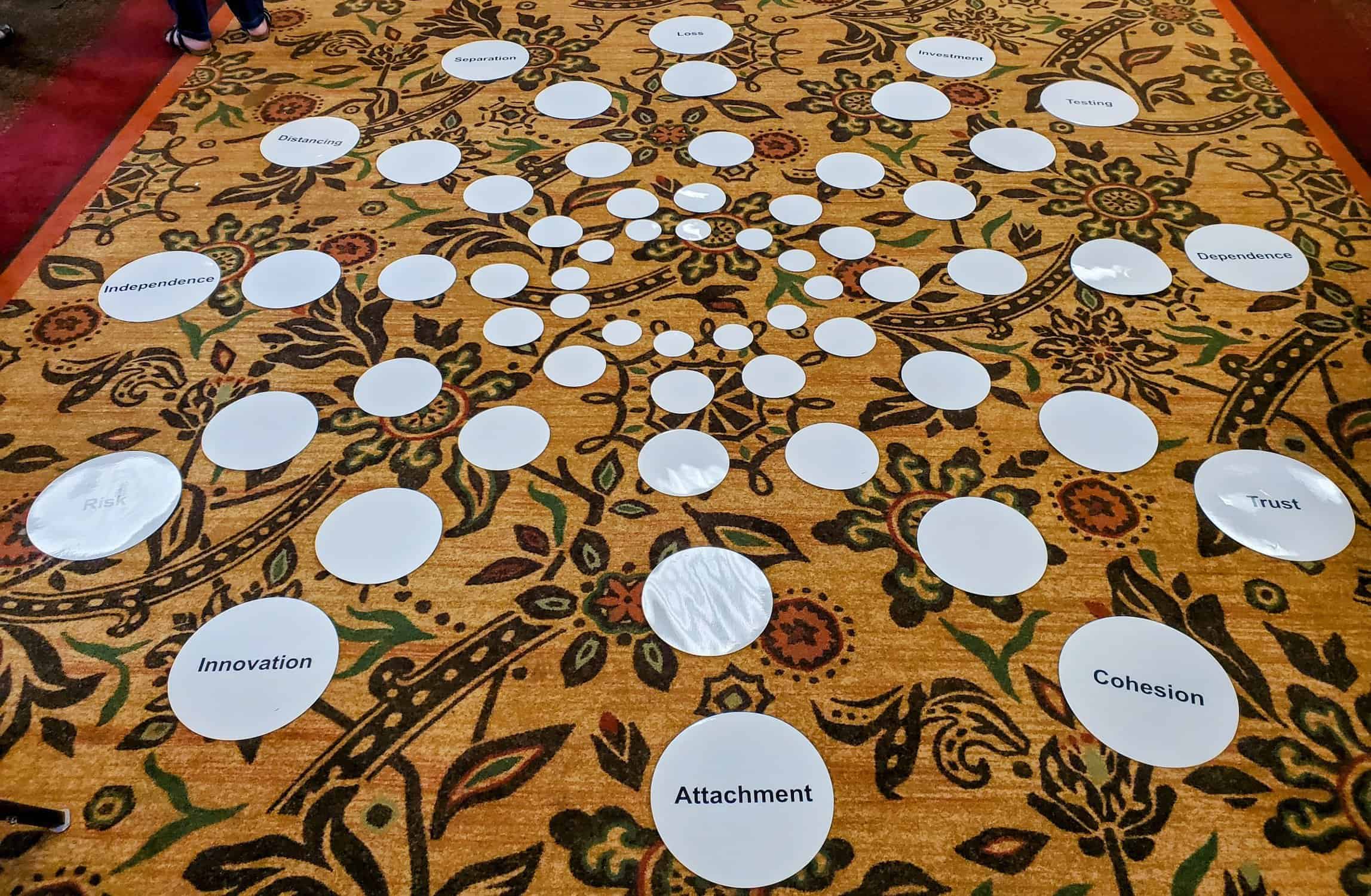
It’s a pretty simple exercise with three steps. This Team Clock® floor model enables participants to see every stage of the team’s lifecycle. Maybe there’s been a big change and people are struggling to adjust. Perhaps there’s an ongoing conflict about the team’s destination and the alternate paths to get there. Sometimes team trust just isn’t strong enough to support exploration. Maybe recent growth has had unexpected consequences. You won’t know until you see everyone’s current position.
Step 1: Everyone stands on whatever dot on the floor model that best represents their current challenge. Each teammate then answers the question, “Where are you on the cycle and why are you there?”
Step 2: Everyone moves to the place in the cycle that best represents where they’d most like to be in six months. Each teammate then answers the question, “Why do I seek this change and what do I need from my teammates to get there?”
Step 3: Craft an action plan that honors these three essential stances:
- We must protect our history and legacy.
- Our future will not look the same as it does today and we must prepare for change.
- We need to clarify our priorities, agree on our strategy, and commit to a sequence of steps to take together.
Until the team has achieved a level of accountability that no longer requires tracking, it’s best to memorialize the goals, strategies, tactics, and timelines. Devote a portion of each team meeting to some version of a red-yellow-green check-in so that movement can be acknowledged and obstacles can be problem-solved. If you repeat the exercise regularly, the tracking will ultimately become unnecessary.
Everyone eventually buys into the culture of accountability because everyone’s position in the cycle has been honored. Goals, roles, and pace of change can be negotiated collaboratively. The mission will strengthen. Trust will grow. Innovation will become more daring and resilience will become the defining visage of change.
Then what? Keep asking and answering the three questions. Where are we on the clock and why? Where would we like to be next and what do we need from each other to get there? What plan of action will lead us to our shared goal?
In this case, it’s worth it to buy the floor model.

